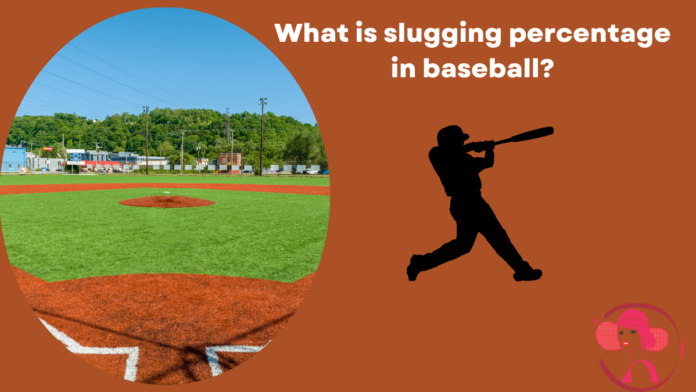Baseball is a game rich with statistics, each offering a unique insight into a player’s performance. One of the more comprehensive stats that has gained popularity in recent years is OPS.
OPS stands for On-base Plus Slugging. It is a combined measure of a player’s ability to get on base and hit for power.
To know OPS and its components on-base percentage (OBP) and what is slugging percentage (SLG) can give a clearer picture of a player’s offensive contributions.
What is OPS?
OPS is a metric that combines two important offensive statistics: on-base percentage and slugging percentage.
This statistic provides a quick way to evaluate a player’s offensive abilities. By combining OBP and SLG, OPS gives a balanced view of a player’s capacity to get on base and their power-hitting prowess.
Understanding On-Base Percentage (OBP)
On-base percentage measures how frequently a batter reaches base. This includes hits, walks, and being hit by pitches, but not errors or fielder’s choices.
OBP is crucial because getting on base is the first step to scoring runs. A higher OBP indicates a player adept at avoiding outs and providing opportunities for their team to score.
What is Slugging Percentage (SLG)
Slugging percentage measures the power of a hitter by calculating the total number of bases a player records per at-bat. It accounts for singles, doubles, triples, and home runs.
Total bases are calculated as follows: a single count as one base, a double as two, a triple as three, and a home run as four. SLG gives a sense of a player’s power-hitting capability. A higher slugging percentage indicates a player who hits for extra bases more frequently.
Why Combine OBP and SLG?
Combining OBP and SLG into OPS provides a more comprehensive metric than using either stat alone. OBP highlights players’ ability to get on base, while SLG emphasizes their power. Combining these gives OPS a balanced view of a player’s offensive performance.
A player with a high OPS is valuable because they can reach base frequently and hit for power. This dual threat is essential for scoring runs and driving in teammates.
What are the OPS Values
OPS values can vary significantly, but generally, a good OPS is considered to be around .800 or higher. Here’s a rough guide to interpreting OPS:
- Below .700: Below-average hitter
- .700 – .800: Average hitter
- .800 – .900: Above average hitter
- .900 – 1.000: Excellent hitter
- Above 1.000: Elite hitter
These ranges provide a quick reference for evaluating a player’s offensive contributions. However, when interpreting these numbers, it’s essential to consider the context, such as the era, ballpark factors, and league averages.
What are the usages
OPS has gained widespread acceptance in both traditional and advanced baseball analytics. Legendary players like Babe Ruth and Ted Williams have exceptionally high OPS numbers, reflecting their dominance at the plate.
Modern players such as Mike Trout and Bryce Harper also boast impressive OPS figures, showcasing their balanced offensive skills.
Sabermetrics, the advanced study of baseball statistics, heavily use OPS. It serves as a foundational metric for more complex evaluations and comparisons.
Teams and analysts use OPS to identify undervalued players, understand player strengths, and make informed decisions about lineups and strategies.
Limitations of OPS
While OPS is a valuable metric, it is not without its limitations. It treats OBP and SLG equally, even though getting on base (OBP) might be slightly more valuable than slugging. Advanced metrics like weighted On-Base Average (wOBA) address this by giving different weights to different types of offensive events.
Moreover, OPS does not account for baserunning skills or situational hitting, which are also crucial aspects of a player’s offensive contributions. Therefore, while OPS is a useful tool, it should be used alongside other statistics for a comprehensive analysis.
Conclusion
OPS is a powerful statistic combining on-base and slugging percentages to provide a comprehensive measure of a player’s offensive performance. It balances the ability to reach base with the capacity to hit for power, offering a well-rounded view of a player’s contributions.
Understanding OPS and its components can enhance your appreciation of baseball and the strategies behind it. While it has its limitations, OPS remains a vital metric in evaluating and comparing players’ offensive skills in modern baseball.
Some Questions
What is OPS in baseball?
OPS stands for On-base Plus Slugging. It combines on-base percentage (OBP) and slugging percentage (SLG) to evaluate a player’s overall offensive performance.
How is OPS calculated?
OPS is calculated by adding a player’s on-base percentage (OBP) to their slugging percentage (SLG).
What does a high OPS indicate?
A high OPS indicates a player who can both get on base frequently and hit for power, making them a valuable offensive asset.
Why is OPS important?
OPS is important because it provides a quick and comprehensive measure of a player’s offensive capabilities, balancing their ability to reach base and hit for extra bases.
What are the limitations of OPS?
OPS treats OBP and SLG equally, not accounting for baserunning or situational hitting. Advanced metrics like wOBA address these limitations by giving weights to different offensive events.
Read More:
- Ways to Create a Successful Social Media Sports Business?
- Minnesota Timberwolves vs Denver Nuggets Match Player Stats and Box Scores for May 19 | 2024 NBA Playoffs Game 7
- Could Kamilla Cardoso leave the Sky for the Golden State Valkyries? Closer look at the expansion draft possibilities
- New WWE Team Formed After SmackDown
- What is the Grand National 2024 Steeplechase?















